An Improved Arc Fault Location Method of DC Distribution System Based on EMD-SVD Decomposition
Abstract
:1. Introduction
2. Traveling Wave Characteristics in a DC Distribution System
2.1. Line Fault Characteristics


2.2. Analysis of Faults Characteristics
2.3. Arc Fault Characterization of DC Systems
3. Fault Location Method Based on EMD-SVD
3.1. Traveling Wave Decomposition with EMD
3.2. Traveling Wave Head Calibration with SVD
4. Case Study
4.1. DC Distribution Network Modeling
4.2. Locating Results
4.3. Effect of Transition Resistance
4.4. Comparative Study of Different Signal Processing Methods
5. Conclusions
- (1)
- Wave velocity. The article uses the empirical wave speed and substitutes it into the ranging formula to calculate the fault distance. However, in reality, traveling wave propagation in the line does not propagate at a fixed wave speed, and the use of a fixed wave speed to calculate will inevitably cause a certain error.
- (2)
- The algorithm itself. The EMD algorithm, in the process of decomposition of the signal, may appear to have modal aliasing and an endpoint effect. The EMD decomposition process is from high-frequency to low-frequency decomposition, the highest frequency component priority separation. In this paper, we use the highest frequency component of EMD and focus more on the abruptness of the signal. The degree of influence of the algorithm is minimized. However, further improvement of the algorithm may improve the accuracy of the experimental results.
Author Contributions
Funding
Institutional Review Board Statement
Informed Consent Statement
Data Availability Statement
Conflicts of Interest
References
- Wei, W.; Zhou, Y.; Zhu, J.; Hou, K.; Zhao, H.; Li, Z.; Xu, T. Reliability Assessment for AC/DC Hybrid Distribution Network with High Penetration of Renewable Energy. IEEE Access 2019, 7, 153141–153150. [Google Scholar] [CrossRef]
- Xiao, J.; Zhang, Y.; Wan, L.; Li, H. Application of DC Grid in Global Energy Internet Positioning and Case Study. Glob. Energy Internet 2018, 1, 32–38. [Google Scholar]
- Shen, M.; Zhou, S.; An, Z.; Wang, T. Influence of Distributed Photovoltaic Access on Power Quality of Distribution Network and Countermeasures in New Power System. In Proceedings of the 18th International Conference on AC and DC Power Transmission (ACDC 2022), Online Conference, 2–3 July 2022; pp. 919–924. [Google Scholar]
- Elsayed, A.T.; Mohamed, A.A.; Mohammed, O.A. DC Microgrids and Distribution Systems: An Overview. Electr. Power Syst. Res. 2015, 119, 407–417. [Google Scholar] [CrossRef]
- Zhang, W.; Liang, H.; Bin, Z.; Li, W.; Guo, R. Review of DC Technology in Future Smart Distribution Grid. In Proceedings of the IEEE PES Innovative Smart Grid Technologies, Tianjin, China, 16–20 January 2012; pp. 1–4. [Google Scholar]
- Zhan, C.; Smith, C.; Crane, A.; Bullock, A.; Grieve, D. DC Transmission and Distribution System for a Large Offshore Wind Farm. In Proceedings of the 9th IET International Conference on AC and DC Power Transmission (ACDC 2010), London, UK, 19–21 October 2010; pp. 1–5. [Google Scholar]
- Masrur, M.A.; Skowronska, A.G.; Hancock, J.; Kolhoff, S.W.; McGrew, D.Z.; Vandiver, J.C.; Gatherer, J. Military-Based Vehicle-to-Grid and Vehicle-to-Vehicle Microgrid—System Architecture and Implementation. IEEE Trans. Transp. Electrif. 2018, 4, 157–171. [Google Scholar] [CrossRef]
- He, J.; Zhou, J.; Zheng, F.; Xia, Y.; Yuan, W. Application of AC/DC Hybrid System in Industrial Park Scenario. In Proceedings of the 2020 Asia Energy and Electrical Engineering Symposium (AEEES), Chengdu, China, 29–31 May 2020; pp. 978–982. [Google Scholar]
- Gururajapathy, S.S.; Mokhlis, H.; Illias, H.A. Fault Location and Detection Techniques in Power Distribution Systems with Distributed Generation: A Review. Renew. Sustain. Energy Rev. 2017, 74, 949–958. [Google Scholar] [CrossRef]
- Gong, B.; Fan, L.; Li, R.; Zhu, D.; Zeng, C.; Jia, Y.; Lan, Y.; Xu, S. Mechanism Analysis of Mountain Fire Caused by Arc Grounding Fault Discharge in Distribution Network in Forest and Pastoral Areas. In Proceedings of the 2023 6th International Conference on Energy, Electrical and Power Engineering (CEEPE), Guangzhou, China, 12–14 May 2023; pp. 1140–1145. [Google Scholar]
- Wang, Z.; Balog, R.S. Arc Fault and Flash Signal Analysis in DC Distribution Systems Using Wavelet Transformation. IEEE Trans. Smart Grid 2015, 6, 1955–1963. [Google Scholar] [CrossRef]
- Heng, N.; Liang, K. Review on Fault Protection Technologies do DC Microgrid. High Volt. Technol. 2020, 46, 2241–2254. [Google Scholar]
- Zhang, M.; Guo, R.; Sun, H. Fault Location of MMC-HVDC DC Transmission Line Based on Improved VMD and S Transform. In Proceedings of the 2020 4th International Conference on HVDC (HVDC), Xi’an, China, 6–9 November 2020; pp. 792–796. [Google Scholar]
- Yu, L.; Zou, G.; Wei, X.; Sun, C. Traveling Wave Bus Protection for MMC Based Multi-terminal DC Distribution Network. In Proceedings of the 2019 IEEE 8th International Conference on Advanced Power System Automation and Protection (APAP), Xi’an, China, 21–24 October 2019; pp. 373–377. [Google Scholar]
- Li, B.; He, J.; Li, Y.; Li, B.; Wen, W. High-speed Directional Pilot Protection for MVDC Distribution Systems. Int. J. Electr. Power Energy Syst. 2020, 121, 106141. [Google Scholar] [CrossRef]
- Zhang, X.; Tai, N.; Wang, Y. EMTR-Based Fault Location for DC Line in VSC-MTDC System Using High-Frequency Currents. Iet Gener. Transm. Distrib. 2017, 11, 2499–2507. [Google Scholar] [CrossRef]
- Elgamasy, M.M.; Izzularab, M.A.; Zhang, X.-P. Single-End Based Fault Location Method for VSC-HVDC Transmission Systems. IEEE Access 2022, 10, 43129–43142. [Google Scholar] [CrossRef]
- Yang, Y.; Huang, C.; Xu, Q. A Fault Location Method Suitable for Low-Voltage DC Line. IEEE Trans. Power Deliv. 2020, 35, 194–204. [Google Scholar] [CrossRef]
- Park, J.-D.; Candelaria, J.; Ma, L.; Dunn, K. DC Ring-Bus Microgrid Fault Protection and Identification of Fault Location. IEEE Trans. Power Deliv. 2013, 28, 2574–2584. [Google Scholar] [CrossRef]
- Liu, W.; Liu, F.; Zha, X.; Huang, M.; Chen, C.; Zhuang, Y. An Improved SSCB Combining Fault Interruption and Fault Location Functions for DC Line Short-Circuit Fault Protection. IEEE Trans. Power Deliv. 2019, 34, 858–868. [Google Scholar] [CrossRef]
- Jia, K.; Shi, Z.; Wang, C.; Li, J.; Bi, T. Active Converter Injection-Based Protection for a Photovoltaic DC Distribution System. IEEE Trans. Ind. Electron. 2022, 69, 5911–5921. [Google Scholar] [CrossRef]
- Huang, N.E.; Shen, Z.; Long, S.R.; Tung, C.C.; Liu, H.H. The Empirical Mode Decomposition and Hilbert Spectrum for Nonlinear and Non-stationary Time Series Analysis. Proc. R. Soc. Lond. A 1998, 454, 903–995. [Google Scholar] [CrossRef]
- Ren, W.; Song, J.; Tian, S.; Zhang, X. Estimation of the Equivalent Number of Looks in SAR Images Based on Singular Value Decomposition. IEEE Geosci. Remote Sens. Lett. 2015, 12, 2208–2212. [Google Scholar] [CrossRef]
- Dong, X. The Theory of Fault Travel Waves and Its Application; Springer: Singapore, 2022. [Google Scholar]
- Shang, L.; Zhai, W.; Liu, P. Study of Fault Location in Transmission Line Using S Transform. In Proceedings of the 2016 International Symposium on Computer, Consumer and Control (IS3C), Xi’an, China, 4–6 July 2016. [Google Scholar]
- Li, A.; Cai, Z.; Li, X. Study on the Propagation Characteristics of Traveling Waves in HVDC Transmission Lines on the Basis of Analytical Method. Chin. J. Electr. Eng. 2010, 30, 94–100. [Google Scholar]
- Jalil, M.; Samet, H.; Ghanbari, T.; Tajdinian, M. An Enhanced Cassie–Mayr-Based Approach for DC Series Arc Modeling in PV Systems. IEEE Trans. Instrum. Meas. 2021, 70, 9005710. [Google Scholar] [CrossRef]
- Li, X.; Jin, J.; Shen, Y.; Liu, Y. Noise level estimation method with application to EMD-based signal denoising. J. Syst. Eng. Electron. 2016, 27, 763–771. [Google Scholar]
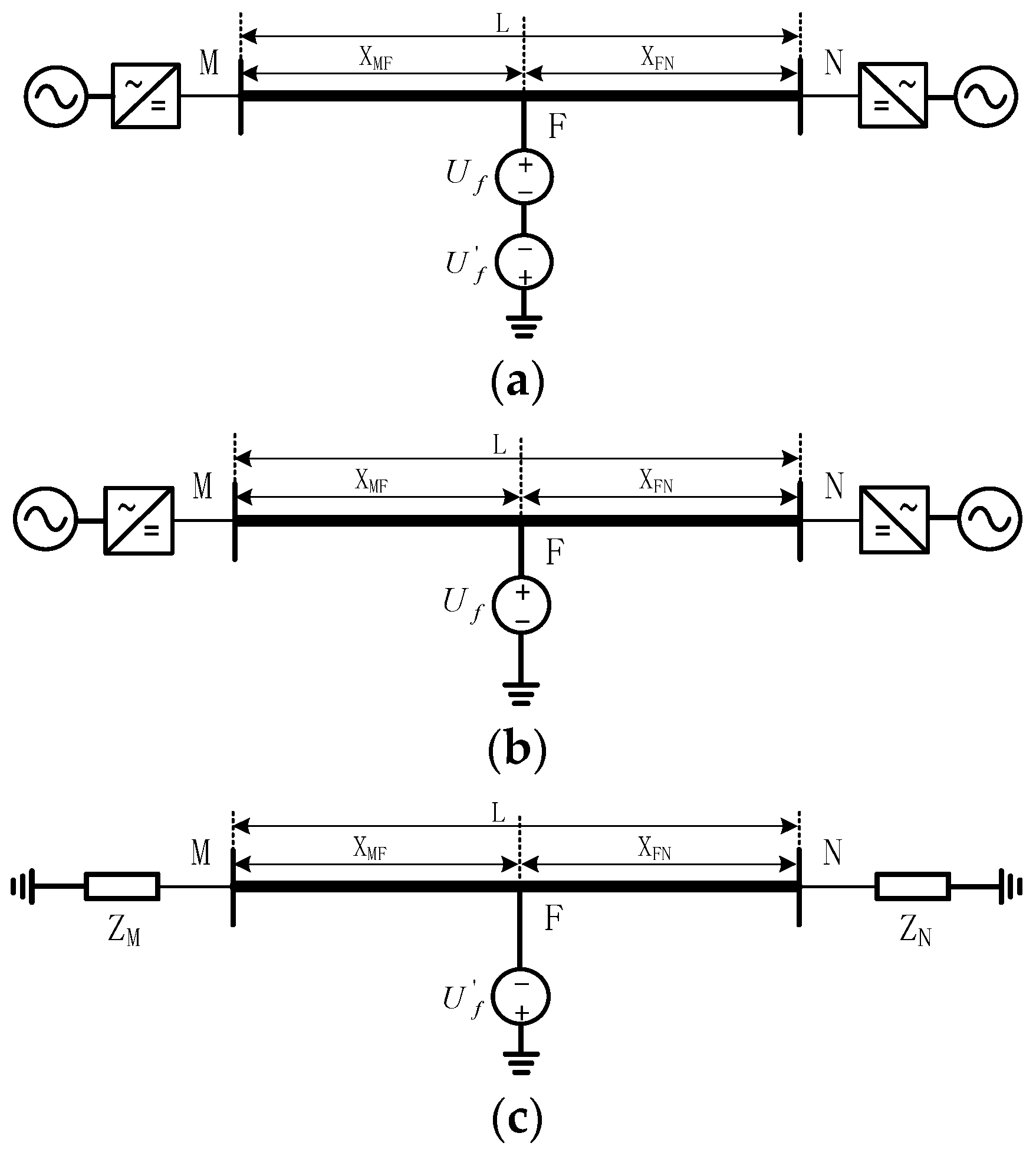



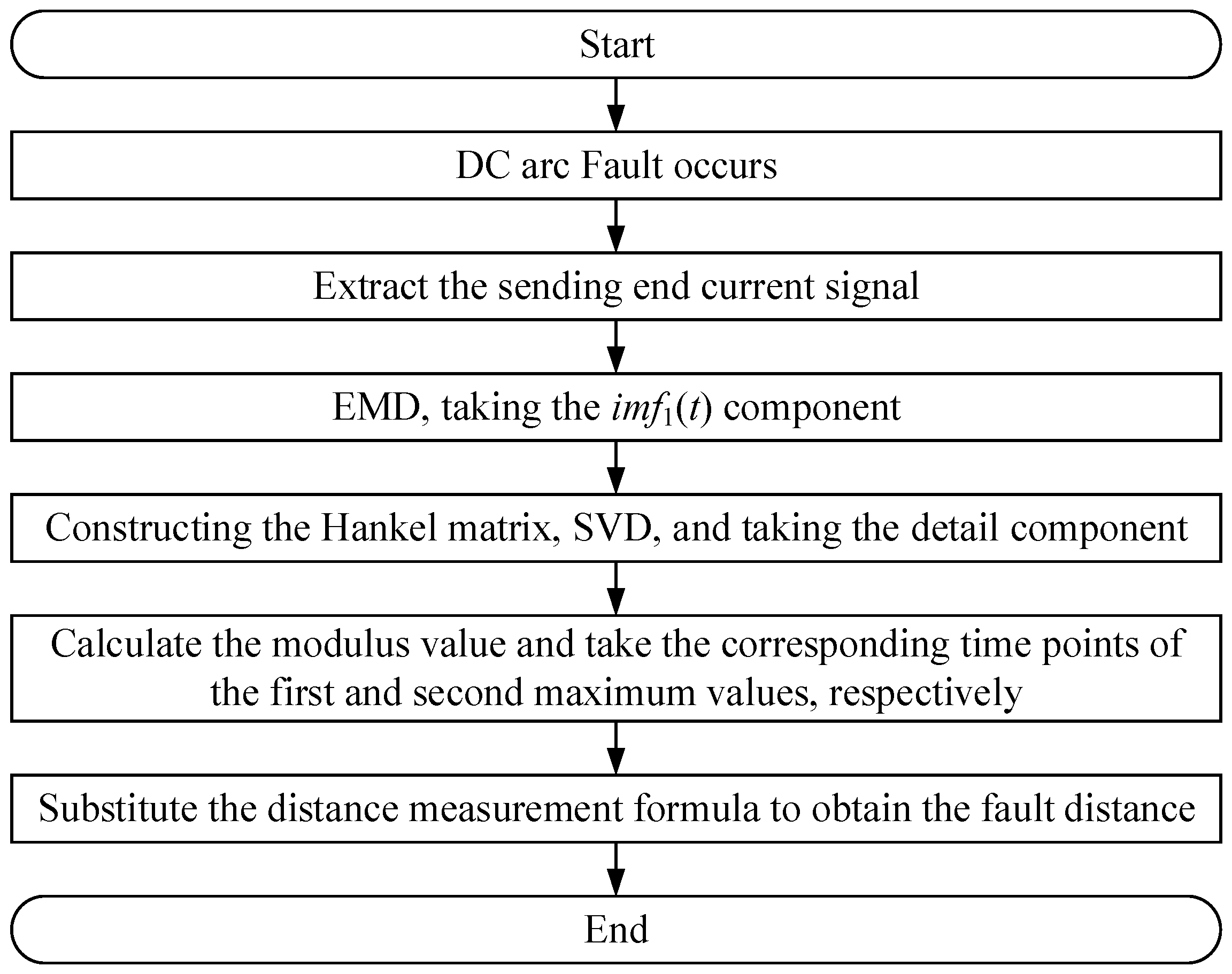

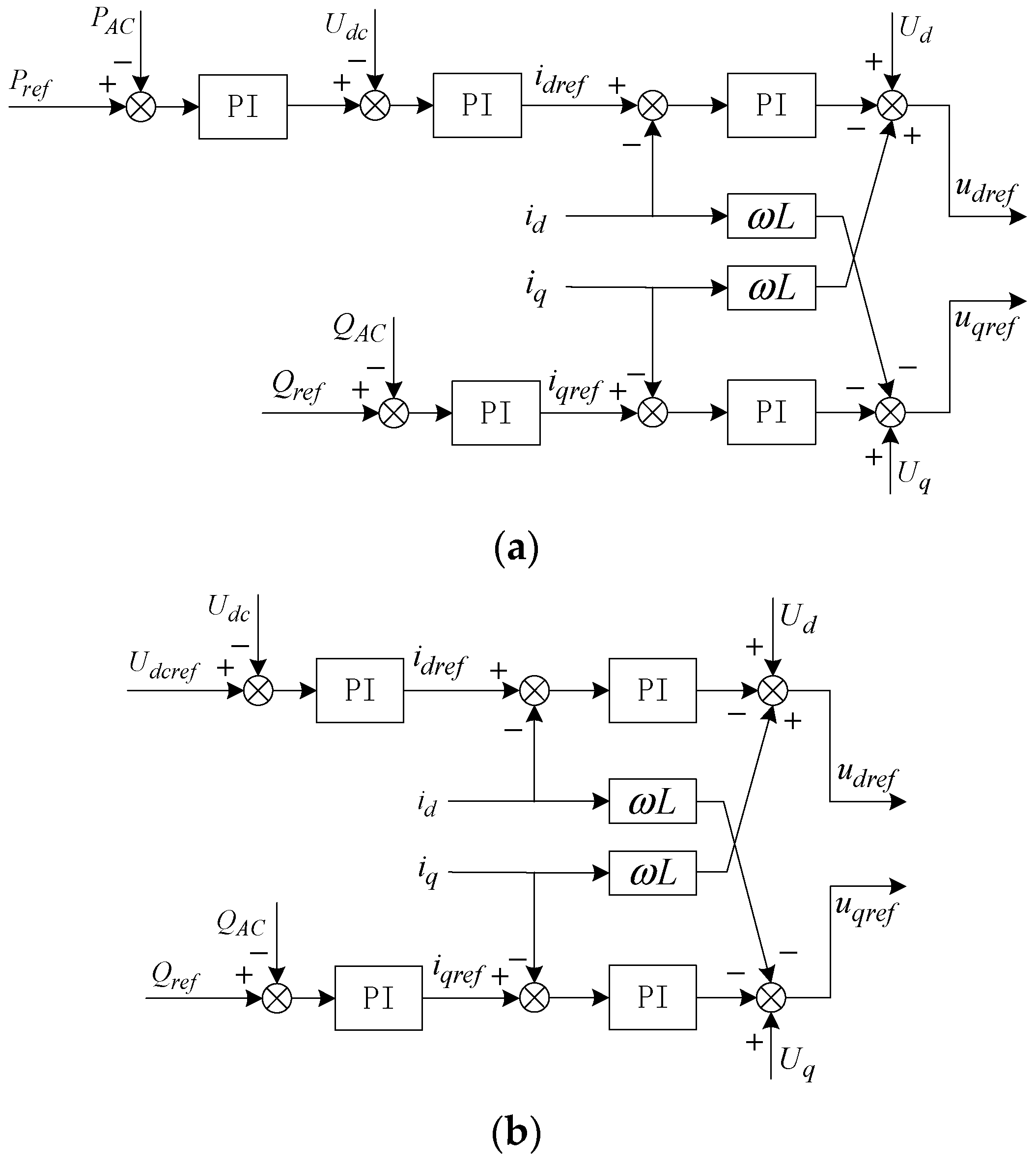
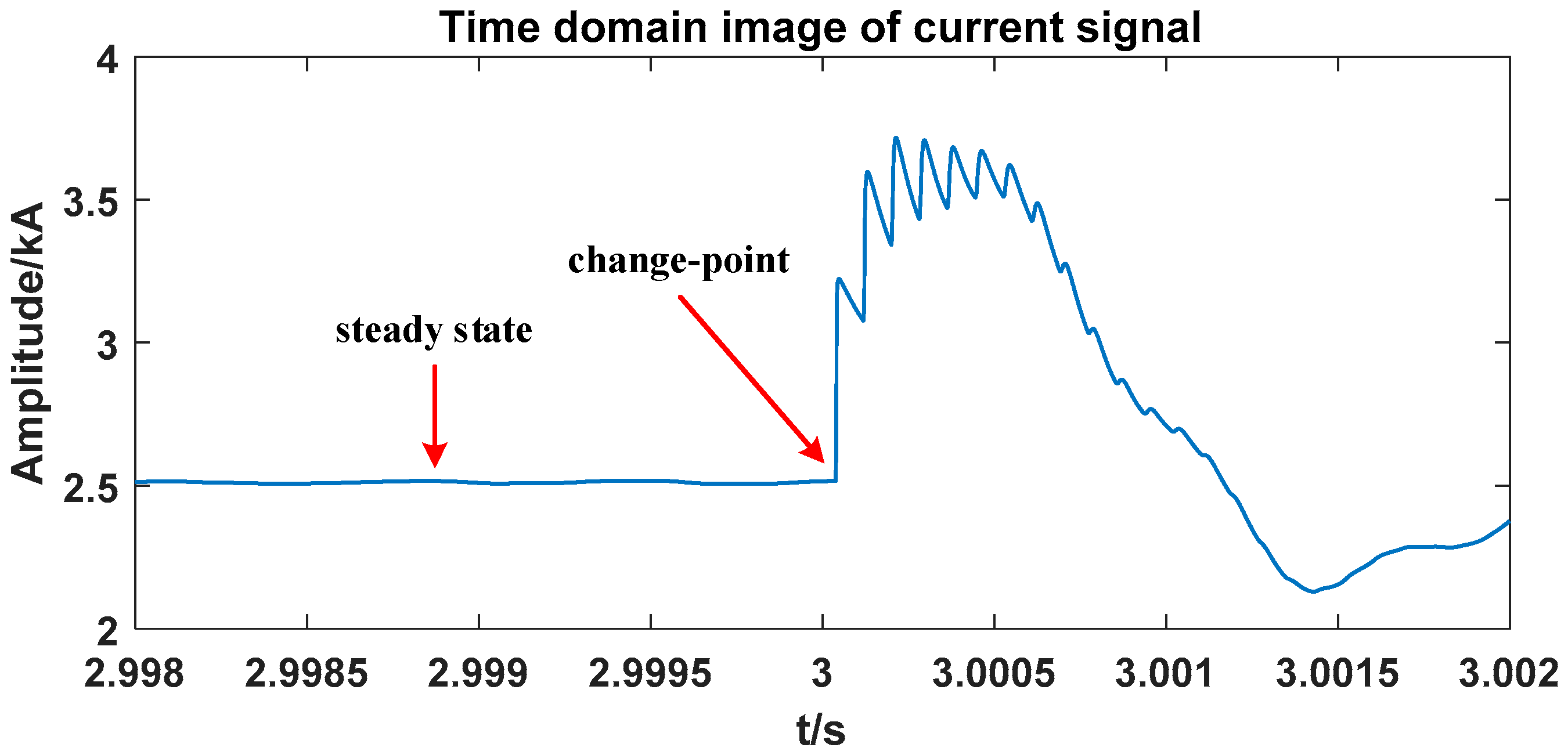

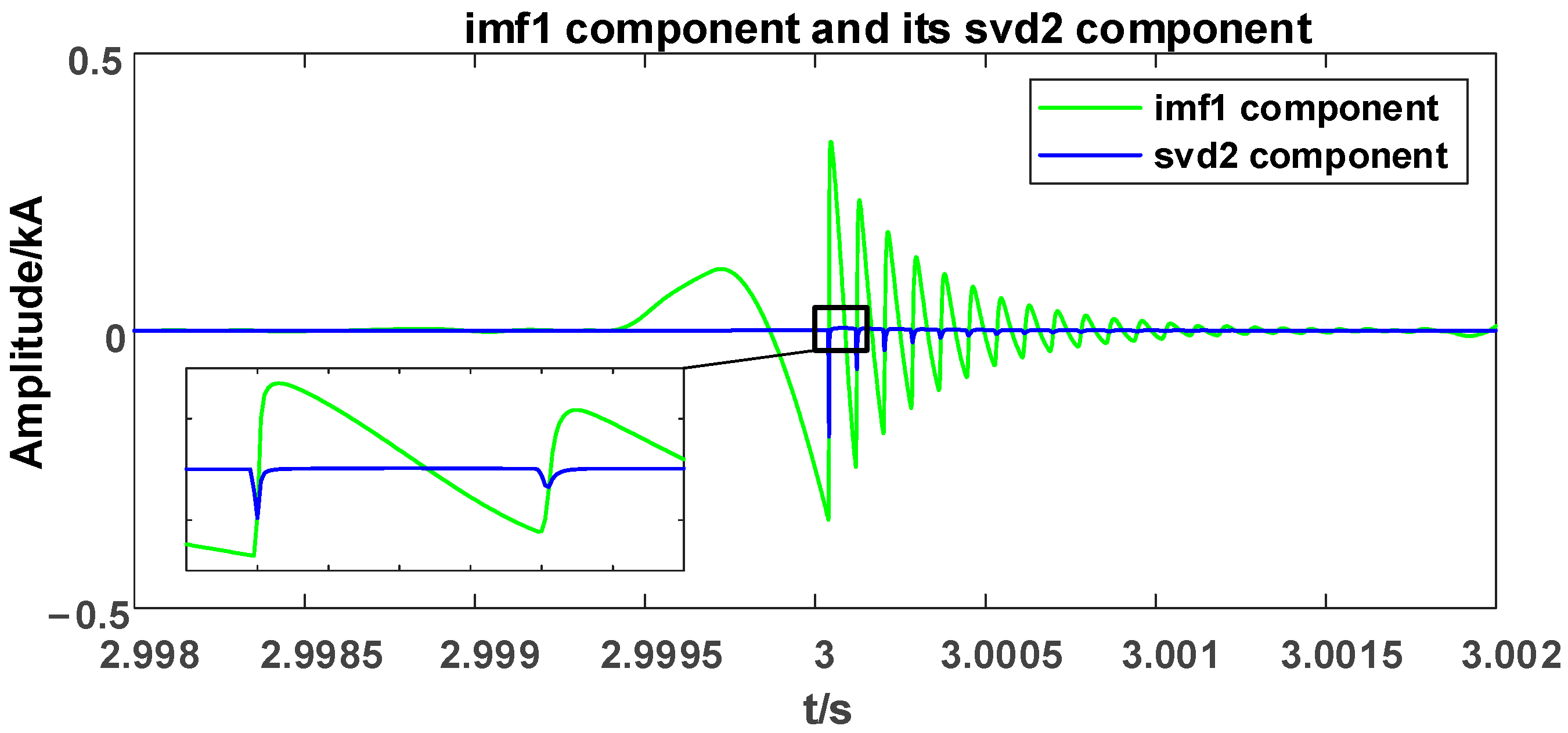




| X/km | TM1/s | TN2/s | XM/km | XR/% |
|---|---|---|---|---|
| 5 km from M end, 15 km from N end | 3.000024 | 3.000076 | 5.143060 | 0.715 |
| 10 km from M end, 10 km from N end | 3.000051 | 3.000153 | 10.088310 | 0.442 |
| 15 km from M end, 5 km from N end | 3.000076 | 3.000230 | 15.231370 | 1.157 |
| X/km | TM1/s | TN2/s | XM/km | XR/% |
|---|---|---|---|---|
| 1 km from M end, 19 km from N end | 3.000004 | 3.000014 | 0.989050 | 0.055 |
| 19 km from M end, 1 km from N end | 3.000097 | 3.000291 | 19.187570 | 0.938 |
Disclaimer/Publisher’s Note: The statements, opinions and data contained in all publications are solely those of the individual author(s) and contributor(s) and not of MDPI and/or the editor(s). MDPI and/or the editor(s) disclaim responsibility for any injury to people or property resulting from any ideas, methods, instructions or products referred to in the content. |
© 2023 by the authors. Licensee MDPI, Basel, Switzerland. This article is an open access article distributed under the terms and conditions of the Creative Commons Attribution (CC BY) license (https://creativecommons.org/licenses/by/4.0/).
Share and Cite
Jing, L.; Xia, L.; Zhao, T.; Zhou, J. An Improved Arc Fault Location Method of DC Distribution System Based on EMD-SVD Decomposition. Appl. Sci. 2023, 13, 9132. https://doi.org/10.3390/app13169132
Jing L, Xia L, Zhao T, Zhou J. An Improved Arc Fault Location Method of DC Distribution System Based on EMD-SVD Decomposition. Applied Sciences. 2023; 13(16):9132. https://doi.org/10.3390/app13169132
Chicago/Turabian StyleJing, Liuming, Lei Xia, Tong Zhao, and Jinghua Zhou. 2023. "An Improved Arc Fault Location Method of DC Distribution System Based on EMD-SVD Decomposition" Applied Sciences 13, no. 16: 9132. https://doi.org/10.3390/app13169132




